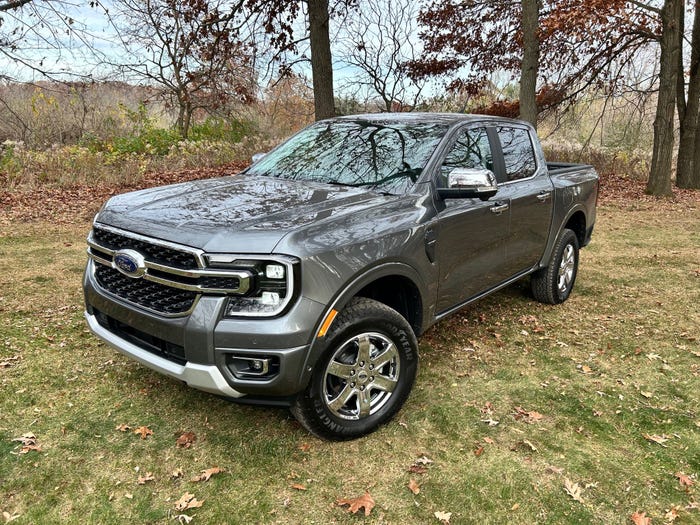Oz Auto Makers Build Fewer Vehicles in 2008, Face Growing Threat From Imports
Deliveries of locally built vehicles accounted for half of the Australian market a decade ago but last year represented just 16.9% of a total 1,012,164 units.


Australia’s three domestic auto makers built 324,118 vehicles last year, down 3.2% from 334,772 in 2007.
But new VFACTS data from the Federal Chamber of Automotive Industries shows the bottom fell out of the Australian market in December, when only 14,678 vehicles were produced. It was the lowest monthly output of 2008 and the lowest December in at least seven years.
December production represented a 29.0% decline from November’s 20,659 assemblies and a 30.2% drop from 21,040 builds in like-2007.
Ford Motor Co. Australia Ltd., GM Holden Ltd. and Toyota Motor Corp. Australia Ltd. are the country’s only domestic producers, as Mitsubishi Motors Australia Ltd. ceased assembly of its 380 large sedan in March. Six years ago, local auto makers built 408,186 vehicles.
Domestic sales of locally manufactured vehicles in 2008 slipped 14.5%, or 29,053 units, to 171,432, the lowest figure since at least 1980.
Deliveries of locally built vehicles accounted for half of the Australian market a decade ago but last year represented just 16.9% of a total 1,012,164 units.
The outlook for domestic auto makers this year remains uncertain.

Mitsubishi ceased production of 380 in March.
Toyota Australia, the country’s largest vehicle exporter, already has announced eight down days between March and May due to falling demand in domestic and export markets.
The slowdown is despite a record year for the auto maker in 2008, with more than 100,000 units exported, mainly to the Middle East, Bernie O’Connor, Toyota Australia corporate services executive director, says in a statement. The auto maker produced more than 140,000 vehicles last year.
GM Holden’s exports reportedly jumped 65% last year to about 60,000 units.
Industry analysts believe the recent drop in the value of the Australian dollar will benefit domestic auto makers by making their vehicles more competitive with imports.
Australian Automotive IndustryMonthly Production Volumes
2008 | 2007 | 2006 | 2005 | 2004 | 2003 | 2002 | |
|---|---|---|---|---|---|---|---|
Jan | 21,152 | 18,666 | 14,044 | 14,677 | 20,423 | 21,211 | 19,315 |
Feb | 32,303 | 29,376 | 28,276 | 32,975 | 34,798 | 35,769 | 27,891 |
Mar | 26,393 | 29,433 | 30,802 | 34,626 | 38,824 | 37,440 | 29,119 |
Apr | 28,721 | 22,633 | 25,870 | 33,616 | 30,233 | 29,158 | 22,043 |
May | 35,180 | 33,274 | 33,630 | 38,845 | 36,971 | 36,364 | 31,251 |
Jun | 29,884 | 29,195 | 23,568 | 37,663 | 39,164 | 34,788 | 28,979 |
Jul | 33,121 | 31,813 | 22,643 | 32,146 | 25,842 | 36,641 | 27,482 |
Aug | 29,397 | 27,713 | 34,224 | 36,318 | 37,098 | 33,973 | 27,903 |
Sep | 28,511 | 28,563 | 28,944 | 36,514 | 37,333 | 37,188 | 28,894 |
Oct | 24,119 | 33,320 | 33,020 | 36,462 | 37,130 | 39,571 | 34,695 |
Nov | 20,659 | 29,746 | 31,536 | 33,167 | 39,306 | 34,237 | 33,466 |
Dec | 14,678 | 21,040 | 20,403 | 21,976 | 28,192 | 31,846 | 29,436 |
Total | 324,118 | 334,772 | 326,960 | 388,985 | 405,314 | 408,186 | 340,474 |
Meanwhile, Opposition Liberal Party industry spokesman Eric Abetz says state government procurement policies favoring smaller vehicles on environmental grounds are hurting local auto makers.
He tells The Australian newspaper Queensland and Tasmania require cars to comply with a greenhouse-gas emissions standard, now met only by European imports. Further, New South Wales, Western Australia and the Australian Capital Territory stipulate vehicles must have 4-cyl. or smaller engines, which excludes the locally built Ford Falcon, Holden Commodore and Toyota Aurion.
“In their haste to introduce environmentally friendly policies, state governments have moved too far ahead of our local manufacturers, to the point they have put in place policies which actively exclude them from the market,” Abetz says.
About the Author
You May Also Like



